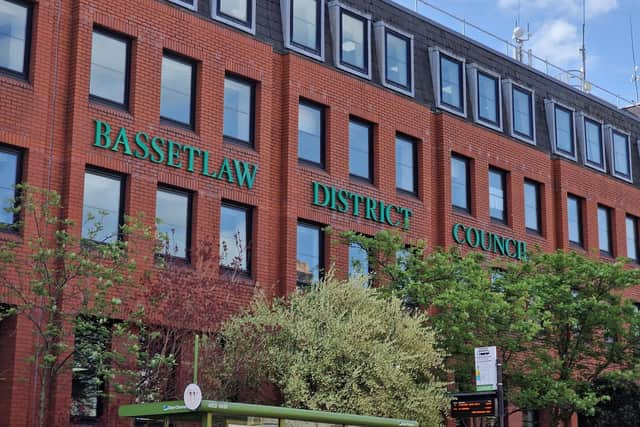Worksop council reassessing some of its housing for failing RAAC concrete
and live on Freeview channel 276
However, the authority says it currently believes no buildings in its ownership contain the material, but has decided precautionary checks are needed.
The announcement comes amid concerns more than 100 schools across the country may be at risk due to the presence of reinforced autoclaved aerated concrete.
Advertisement
Hide AdAdvertisement
Hide AdRAAC is a lightweight, bubbly form of concrete usually found within roofs but sometimes in walls and floors. It was favoured in construction projects from the 1950s to the mid-1990s, before being found to be weak and less durable than traditional concrete.


Experts say it is susceptible to failure as it deteriorates over time, with a life expectancy of little more than 30 years.
It has been found in nearly 150 schools nationally, while other public buildings found with it in recent years include Bassetlaw Hospital, although Doncaster & Bassetlaw Hospitals NHS Trust confirmed this year all signs of RAAC had been eradicated.
However, Brendan Clarke-Smith, Bassetlaw MP, has written to Bassetlaw Council asking for assurances about other public buildings, including the council’s housing stock and main offices in Worksop and Retford.
Advertisement
Hide AdAdvertisement
Hide AdHe said: “The 1950s-90s represent the period when the largest number of social housing was built.
“I would like to ask which surveys have already been carried out and any related risk assessments and works either already undertaken or planned in the future to remove any RAAC which could pose potential safety issues.”
The authority has confirmedit is assessing a number of homes in its housing stock alongside other buildings it owns, but does not believe RAAC has been used in “any of our buildings”.
David Armiger, council chief executive, said: “All of our premises are regularly inspected and we follow the most up-to-date guidance to ensure our buildings are safe for people to use and to live in.
Advertisement
Hide AdAdvertisement
Hide Ad“The use of RAAC predominantly features in particular categories of structures built within a limited period of time.
“Based on these regular inspections, we do not believe RAAC has been used in any of our buildings.
“However, we are undertaking an urgent reassessment of a small section of our housing stock and other buildings in the council’s ownership, to determine if RAAC is present.